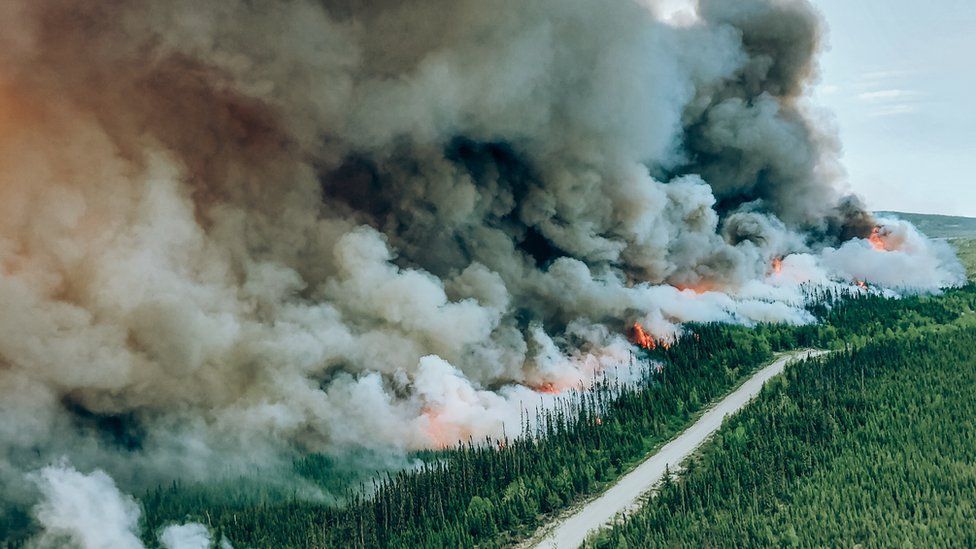Burning Borders - The Unprecedented Scale of Canadian Wildfires
Unprecedented wildfires in Canada have unleashed a transnational environmental crisis, with smoke blanketing the US east coast. Discover how abnormal weather conditions are reshaping the landscape.

By: Julian Olsen-Pendergast
Amidst the unsettling haze that engulfed the United States' eastern coast last week, the New York Post boldly declared, "Blame Canada." The pervasive smoke, a consequence of raging wildfires in Quebec, unleashed an unprecedented deterioration in the country's air quality, marking a decade-long low. For a brief period, New York found itself listed as the world's most polluted major city. What initially seemed like a predicament confined to Canada swiftly transformed into a shared burden as abnormal winds propelled the plumes across the border. Fortunately, subsequent shifts in wind patterns spared the densely populated eastern coast from further smoke intrusion, but the Canadian infernos continue to rage unabated.
This year, Canadian wildfires ignited earlier than usual and have relentlessly ravaged the landscape ever since. In a single day, approximately 200,000 hectares (or 0.5 million acres) were consumed by flames, surpassing the total wildfire-ravaged area in California during the previous year, as noted by climate change writer David Wallace-Wells. As of June 14th, the Canadian Interagency Forest Fire Centre, a non-profit organisation, estimated a staggering 5.4 million hectares burned—a landmass roughly equivalent to Costa Rica. With this, 2023 stands as the most devastating year for wildfire damage since 1995, when 7.5 million hectares were scorched.
Weather conditions shoulder a considerable portion of the blame. May registered as the hottest month since 1940, accompanied by the dubious distinction of being the seventh-driest. Such aridity desiccates vegetation, creating a combustible landscape primed for fire ignition and rapid propagation. Although the absolute number of fires has not substantially surpassed the norm, each individual blaze has grown exponentially larger than usual. For instance, the area ablaze in Quebec is a staggering 217 times greater than previous instances.
With the exception of the health hazards posed by the pervasive haze, the direct impact on human life has been relatively limited. Approximately 26,000 individuals were compelled to evacuate parts of Canada, yet as of our press time, no fatalities have been reported. President Joe Biden has pledged support by dispatching 600 firefighters from the United States to assist in combating the blaze. However, the situation remains delicate, as a mere shift in wind patterns could once again thrust the crisis onto American soil.


